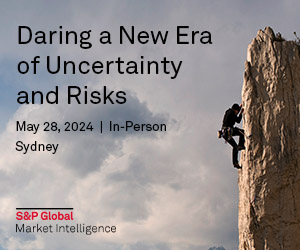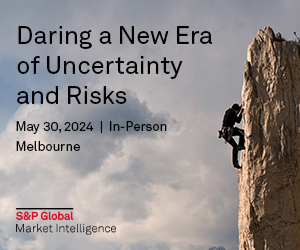Bringing in biodiversity
Biodiversity is more than a buzz word in sustainable finance: it is the next challenge market participants believe the market must confront in the battle to build a sustainable future. But accounting for and measuring biodiversity is not straightforward.
AINSLEY Biodiversity is not yet part of our green-bond framework but I don’t rule out that it will become part of it at a later stage, because we finance biodiversity-related projects around the globe.
However, we find it hard to provide the same transparency as we can for other loan programmes – such as renewable energy and energy-efficient housing in Germany, which are our main programmes. In these areas, we have the data quality we need to ensure high-quality impact reporting for investors.
One of the big challenges for biodiversity is how to measure impact. Even if an issuer has a broad range of projects to finance, it is not clear that they can all be used for a framework as they have to meet certain criteria. Even if we add biodiversity to the framework, it will only comprise a small share of eligible assets for our green bonds.
DORE Biodiversity is one of the cross-cutting themes across our portfolio, just like gender and climate. In fact, our impact report this year is focused on biodiversity. We take a closer look at nature, which encompasses biodiversity and ecosystem services, and the intersection of nature and development.
Nature is important for development and it should be treated like any other asset. It is also in an unprecedented decline that threatens the critical ecosystem on which communities and humanity rely.
The World Bank portfolio includes projects that integrate biodiversity as well as those that focus on direct investments in biodiversity. It continues to increase investments in this area while incorporating safeguards to identify and mitigate risks to nature across all projects.
At the start of this year, IBRD [International Bank for Reconstruction and Development – World Bank] issued a C$1 billio (US$754.7 million) five-year Sustainable Development Bond raising awareness for World Bank’s strategy, projects and programmes that support developing countries, sustainable management of biodiversity.
BILL Despite the challenges, at IFC [International Finance Corporation] we added biodiversity into the use-ofproceeds language of our green bonds. We are conscious that more projects related to biodiversity are coming through on our lending side, which broadens the scope.

One of the big challenges for biodiversity is how to measure impact. Even if an issuer has a broad range of projects to finance, it is not clear that they can all be used for a framework as they have to meet certain criteria. Even if we add biodiversity to the framework, it will only comprise a small share of eligible assets.
GOEBEL As a development bank for agriculture and rural areas, we naturally have some dedicated biodiversity projects. I also notice that, quite often, biodiversity is intertwined with climate change mitigation and adaptation. For example, sustainable forests have a higher degree of biodiversity than plantations, which also supports the ability of forests to adapt to a hotter climate and drier seasons.
It is a topic that is sometimes difficult to separate from the more prominent ones, in other words. Climate change mitigation and adaptation are more prominent in the EU taxonomy, for instance.
RUDGARD I think it is also worth distinguishing between biodiversity and natural capital as the terms often get used interchangeably. In fact, to Stefan’s point, biodiversity is the variability of all organisms regarded as having economic value in an area. While this can also contribute to natural capital, natural capital itself is defined as the stock of resources including geology, soil and air.
Investors are facing the same challenges as those highlighted by issuers: there is no single metric we can use to measure biodiversity in the same way we look at carbon emissions and climate change.
Biodiversity is also very localised – it can be different in various regions. A good example I’ve heard is that water withdrawal in a water-stressed area has a much greater impact than it would in an unstressed area. We need to account for these differences and apply different analyses. This is obviously a much greater challenge than just looking at one metric.
KOTAMRAJU The Asia-Pacific region has some of the largest and most diverse ecosystems in the world, home to nearly half – 17 out of 36 – of the world’s biodiversity hotspots and seven of the 17 “megadiverse” countries. Biodiversity loss is contributing to climate change, and climate change is a key driver of biodiversity loss.
We have incorporated biodiversity in our issuance through our blue-bond framework, which addresses ecosystem and natural resource management and supports eligible projects that promote ocean health. We are seeking to expand this in other sustainable transactions.
HELLERUP We have studied the impact of biodiversity on land and water and we incorporate it – at project level – into all the projects we undertake. In our sustainability policy, we to some extent also look at it on the issuer level. There are so many challenges with biodiversity, though – I learned that we don’t even know how many species there are in New Zealand, so how can we measure them?






